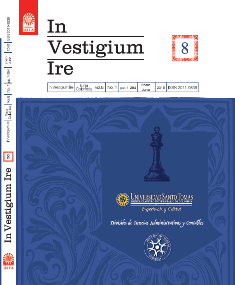INTELIGENCIA DE NEGOCIOS AL PROCESO DE LA EVALUACION DOCENTE
Contenido principal del artículo
Resumen
Las universidades requieren para su evolución la integración de las Bases de datos como apoyo en la toma de decisiones, de esta manera en la evaluación docente mejoró la relación con los estudiantes, permitiendo ser más competitivos, mejorando los procesos internos, minimizando costos e incrementando utilidades, es así como la Universidad Santo Tomás, Seccional Tunja ha empleado el proyecto de Inteligencia de negocios al proceso de evaluación Docente, que permite a sus Directivos utilizar la tecnología Data Warehouse y Olap en el análisis de Información generadas por las Bases de datos, una vez implementado se concluyó que se puede hacer seguimiento académico a cada uno de los docentes, de las facultades y de la universidad en general detallando su comportamiento por cada uno de sus Ítems y características.La minería de Datos consiste de algoritmos que buscan “conocimiento” de diferentes bases de Datos que tienen la historia de los docentes durante su transcurso por la Universidad. El objetivo del conocimiento es prevenir a los Directivos sobre situaciones irregulares, anomalías e incluso acontecimientos negativos no detectados con anticipación.
Detalles del artículo
Cómo citar
Ruiz-Quintero, I. N. (2016). INTELIGENCIA DE NEGOCIOS AL PROCESO DE LA EVALUACION DOCENTE. In Vestigium Ire, 8(1), 206-214. Recuperado a partir de http://revistas.ustatunja.edu.co/index.php/ivestigium/article/view/1056
Número
Sección
In Vestigium Ire Vol. 8
Investigium Ire de http://revistas.ustatunja.edu.co/index.php/ivestigium esta bajo una licencia Creative Commons Reconocimiento-NoComercial-SinObraDerivada 4.0 License.
Citas
Ibermática, Business Intelligence. El conocimien¬to compartido. 2007.
Disponible en: www.todobi.com
S.Negash, Business Intelligence Communications of the Association for Information Systems, vol. 13, article 5. 2004.
S. Williams y N. Williams, The Business Value of Business Intelligence. Business Intelligence Journal. 2003.
F. Dávila, La inteligencia del negocio (business intelligence). Bogotá: Ediciones Politécnico Gran¬colombiano. 2006.
J. L. Cano, Business Intelligence: competir con información. Barcelona: Esade. 2007.
B. Shneiderman, Discovering Business Intelligen¬ce Using Treemap Visualizations. 2006.
C. Hurtado y A. Mendelzon, OLAP Dimension Cons¬traints. In Proc. PODS pp. 169-179. 2002
M. Tammeraja, What is OLAP – On-Line Analytical Processing? 1997
Evaluación docente integral con fines de me¬joramiento http://www.edificando.unal.edu.co/ descargables/model-edificando.pdf
Abukari, Kobana; Job, Vigía. “Business Intelligence in action”. Proquest. CMA Management, (Mayo 07, 2003).
the-data-warehouse-toolkit-the-definitive-gui¬de-to-dimensional-modeling, Ralph Kimball y Margy Ross, 2013
Inmon, Building the Data Warehouse, (Third Edi¬tion). John Wiley & Sons, 2002
Evaluación docente vs. Evaluación de la calidad
http://www.uv.es/relieve/v8n2/relievev8n2_4.pdf
Sistemas de información bi: estado actual y he¬rramientas de software libre http://openaccess.uoc.edu/webapps/o2/bitstream/10609/8175/1/ sduras_tfm_0611.pdf
Solución de inteligencia de negocios para la gestión de recursos educativos y espacios físicos en la universidad del magdalena http://www. unilibre.edu.co/revistaavances/avances-10-1/ tema_01_inteligencia_negocios.pdf
Disponible en: www.todobi.com
S.Negash, Business Intelligence Communications of the Association for Information Systems, vol. 13, article 5. 2004.
S. Williams y N. Williams, The Business Value of Business Intelligence. Business Intelligence Journal. 2003.
F. Dávila, La inteligencia del negocio (business intelligence). Bogotá: Ediciones Politécnico Gran¬colombiano. 2006.
J. L. Cano, Business Intelligence: competir con información. Barcelona: Esade. 2007.
B. Shneiderman, Discovering Business Intelligen¬ce Using Treemap Visualizations. 2006.
C. Hurtado y A. Mendelzon, OLAP Dimension Cons¬traints. In Proc. PODS pp. 169-179. 2002
M. Tammeraja, What is OLAP – On-Line Analytical Processing? 1997
Evaluación docente integral con fines de me¬joramiento http://www.edificando.unal.edu.co/ descargables/model-edificando.pdf
Abukari, Kobana; Job, Vigía. “Business Intelligence in action”. Proquest. CMA Management, (Mayo 07, 2003).
the-data-warehouse-toolkit-the-definitive-gui¬de-to-dimensional-modeling, Ralph Kimball y Margy Ross, 2013
Inmon, Building the Data Warehouse, (Third Edi¬tion). John Wiley & Sons, 2002
Evaluación docente vs. Evaluación de la calidad
http://www.uv.es/relieve/v8n2/relievev8n2_4.pdf
Sistemas de información bi: estado actual y he¬rramientas de software libre http://openaccess.uoc.edu/webapps/o2/bitstream/10609/8175/1/ sduras_tfm_0611.pdf
Solución de inteligencia de negocios para la gestión de recursos educativos y espacios físicos en la universidad del magdalena http://www. unilibre.edu.co/revistaavances/avances-10-1/ tema_01_inteligencia_negocios.pdf


